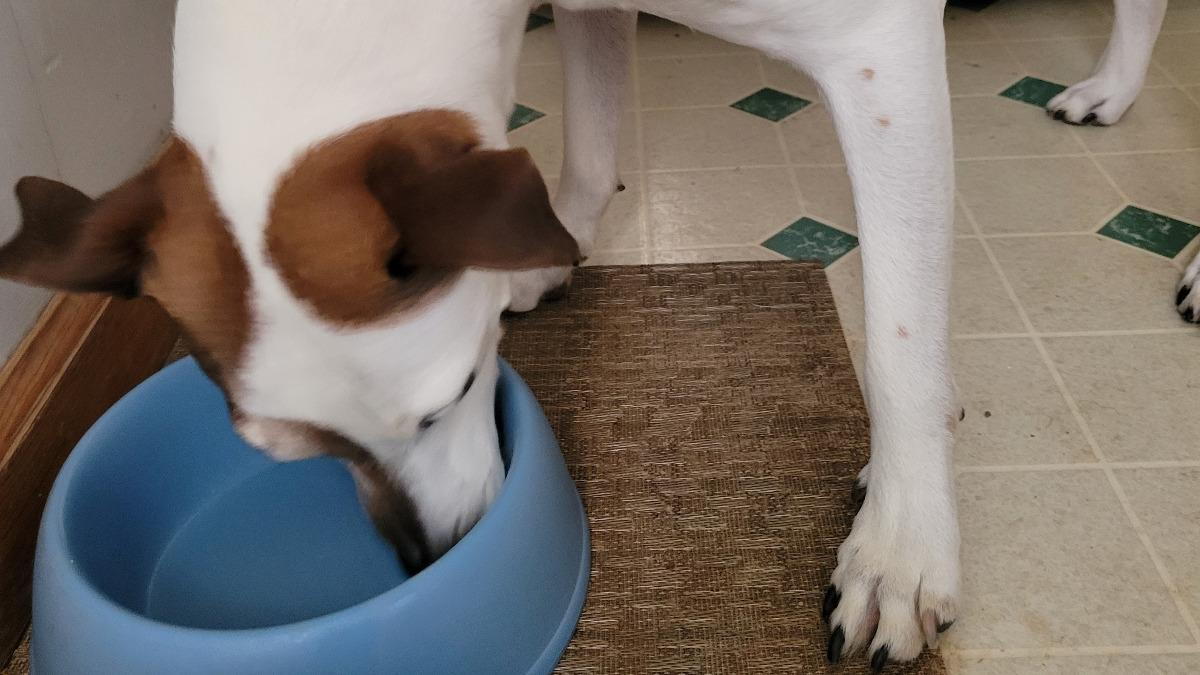Nutrition and Maintaining Healthy Weight in Pets

- posted: May 06, 2023
Nutrition and Maintaining Healthy Weight in Pets
The number of different pet foods available for our furry friends is staggering. How do you sift through to find out which food is best for your pet? And, how much should your pet be eating to maintain a healthy weight? Let’s delve into these questions and learn more about nutrition and avoiding pet obesity to help our pets live long healthy lives.
First, when choosing a pet food, ask your veterinarian for recommendations. There are many good, balanced commercial diets available. One of the best ways to judge if a pet food is a healthy, nutritionally balanced choice is to look for the AAFCO seal. The Association of American Feed Control Officials establishes guidelines for definition of ingredients, product labels, feeding trials, and laboratory analyses of the nutrients that go into pet foods. The FDA also regulates the ingredients that go into pet foods to ensure that they are safe.
Grain free diets are not currently recommended by veterinarians due to concerns about heart health and raw diets are not generally recommended due to concerns for salmonella and other bacterial contamination which can be a threat to both pets and humans.
Home cooked diets can be beneficial to some pets, especially those with food allergies or other health issues; however, to do it right, specific ingredients must be added to ensure pets are receiving all the proper vitamins and minerals. Websites such as BalanceIT.com provide good recipes for a variety of pet foods. Canned food is preferred for cats as they often do not drink enough water.
Obesity is a leading cause of health problems contributing to mobility and joint issues, diabetes, and other medical conditions. Maintaining a healthy weight for your pet can add almost 2 years to his or her lifespan and improve quality of life. Keeping your pet fit and trim can be challenging, but it starts with a good diet and controlling food portions. Exercise, limiting treats and table food and feeding appropriate amounts of good quality pet foods all lead to good body condition scores in our companions.
Use a one cup measure for accurate feeding of dry food. Adult cats and toy breed dogs (15lb or less) need roughly ¼ cup of dry food per day. Medium sized dogs (15-40lb) need about a cup per day. Large breeds (40-75lb) need 2 cups per day and giant breed dogs (90+lb) 3-4 cups per day. Amounts may vary depending on the type and brand fed, your pet’s activity level and whether he or she is neutered or spayed. Puppies and kittens need more calories for growth—the pet food bag should have a guideline on amount needed per day for your pup’s or kitten’s weight. It is recommended to split the total amount into 2 feedings though some pets prefer to eat just once a day while others may graze throughout the day. Cats fed canned food need approximately 4-6 ounces per day (two 3oz cans). Again, these are rough guidelines. Your pet may need more or less food.
Treats should be factored into your pet’s daily calorie count as well. One ounce of cheese fed to a cat is the same calorie equivalent as a person eating 2-3 hamburgers. One cookie fed to a 20lb dog is the same as a person consuming a whole hamburger. Feed treats and table food in moderation and stick to healthy treats.
Maintaining a pet’s healthy weight is not always, easy. But it is important to feed your pet a good quality diet, limit snacks and exercise to keep him or her healthy for as long as possible.
This blog brought to you by the Patton Veterinary Hospital serving Red Lion, York and the surrounding communities.
https://www.petobesityprevention.org/pet-caloric-needs
https://www.avma.org/resources/pet-owners/petcare/your-pets-healthy-weight
Location
Patton Veterinary Hospital
425 E Broadway
Red Lion, PA 17356
